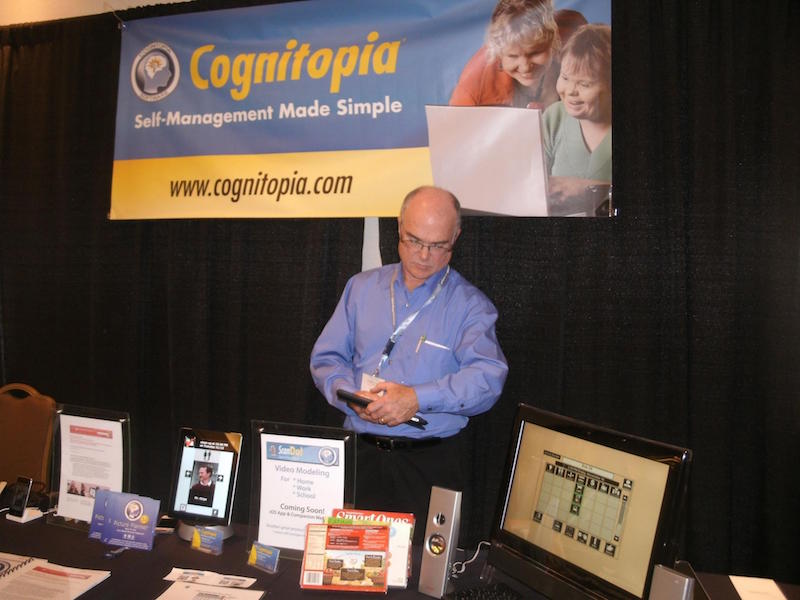How Technology Enriches Personal Autonomy
I remember first meeting Tom Keating in 2001 at the Community Living Program (CLP) in Eugene, Oregon. The CLP is a special education program for students ages 18-21 with a range of exceptionalities who have either graduated with a modified diploma or high school equivalency.
What makes CLP unique is that students attend classes in actual apartments in their community. From the apartments, students ride the city bus, shop, work and have access to other transition-related activities. Students meet with their teachers individually and in advocacy sessions to work on personalized budgeting, scheduling, and goal planning.
I’ll never forget seeing Tom and one of our CLP students together at an advocate meeting. They were both sitting in front of a computer, reviewing what appeared to be an individualized planning system, which I soon learned was Picture Planner, one of a suite of programs developed by Tom. I was immediately struck by the way Picture Planner presented the student’s schedule visually. This wasn’t just your typical Picture Exchange Communication (PEC) system.

Dr. Tom Keating with Cognitopia at the SBIR conference in Portland, Oregon.
Picture Planner provided users with options beyond “what” an activity was and “when” it was happening. It actually applied a task analysis to activity planning, prompting the user to expand on where the activity was happening, how to get there, what to bring, and even what clothes to wear. The application used a bank of icons typical in PEC’s, images downloaded from the web, or photos uploaded from a camera.
At this point, it’s worth mentioning that in 2001 there were no smart phones, iPads, or tablets where an individual could easily capture pictures to use for personalized scheduling. So, at that time, it was a novel experience to see the student engaged in various activities that reflected their personalized schedule for that day. Tom and the teachers at the CLP program encouraged the students to take pictures of their everyday activities when they were out and about so that they could be used in Picture Planner.
Having student involvement in testing and developing the technology that they could use to self-advocate and access their daily environments was truly remarkable at the time. I was equally struck by the involvement the students had in testing and using Picture Planner using their own real-world experiences.
This type of student engagement reminded me of my first teaching job working with students in project-based learning at an alternative high school. I observed that students at risk for school failure who had been disenfranchised by the classroom experience openly thrived when provided opportunities to work outside on reforestation projects, salmon surveys, and riparian enhancement projects—all self-directed, activity-based learning experiences. I was also reminded of my experience working in Boulder, Colorado as a job coach for individuals with disabilities. This job is where I learned firsthand the importance of person-centered planning.
With the work Tom was doing, I was seeing how technology could be harnessed to empower people in many ways. Having a schedule that was self-directed, individualized, and self-modeled has always been the cornerstone of his approach to accessibility and autonomy. In other words, Picture Planner helped to improve upon a person’s ability to make choices and self-reflect on those choices.
The evidence-base on the use self-modeled pictures—or representing a given activity using a picture of the actual activity—continues to grow and, in some instances, be challenged. However, there is little debate around the importance of individualizing personal management systems and providing people with tools to make this happen.
In the case of Picture Planner, it’s currently in the process of being redeveloped as a web-based application. It’s no longer available in the marketplace, but anyone who’s interested can contact Tom at tkeating@cognitopia.com to ask for a CD with a desktop version for Mac and Windows computers. And the new version will be available in 2017 through Cognitopia.com.
Tobias Rickard has been an Autism Consultant for the Eugene 4J School District in Eugene Oregon since 2005. Prior to consulting, Toby was a Special Education teacher and received his Masters in Special Education from the University of Oregon, with an emphasis on positive behavior support. Before teaching, Toby was an Employment Specialist in Boulder, Colorado supporting individuals with autism and other exceptionalities with their vocational pursuits. Toby has previously been active in Oregon Council for Exceptional Children, holding various leadership positions within the state unit. Toby is an active member of his disability community as a long-term board member of the local non-profit Supporting Access to Independent Living and as an advisory board member of KindTree Autism Rocks, both located in Eugene. Toby’s areas of interest are in student advocacy, transition, and accessibility. Particularly, the development of student-centered technologies and universal design for learning.



